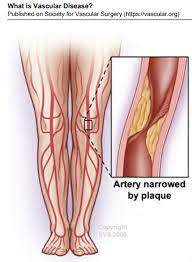Contemporary Techniques in Vascular Reconstruction
Vascular reconstruction is a critical component of modern medicine, addressing various vascular pathologies, such as arterial blockages, aneurysms, and traumatic injuries. Advances in medical technology, surgical techniques, and materials have paved the way for contemporary approaches to vascular reconstruction by vascular surgeon Silver Spring. These innovations have improved patient outcomes, reduced complications, and expanded the scope of conditions that can be treated effectively.
Contemporary Techniques
- Endovascular Aneurysm Repair (EVAR): EVAR, also mentioned in the previous article, remains at the forefront of contemporary vascular reconstruction. This technique involves the placement of a stent graft via a catheter, which is guided to the site of an abdominal aortic aneurysm. EVAR offers a less invasive alternative to open surgery, reducing the risk of complications and promoting faster recovery.
- Fenestrated and Branched Endovascular Aortic Aneurysm Repair (FEVAR and BEVAR): These advanced endovascular techniques are used for complex aortic aneurysms involving branch vessels. Customized stent grafts with fenestrations or branches are deployed to preserve blood flow to vital organs and maintain aortic integrity. FEVAR and BEVAR have expanded the treatment options for patients with challenging anatomical variations.
- Hybrid Procedures: Combining endovascular and open surgical techniques, hybrid procedures are increasingly employed for complex vascular reconstructions. For example, in cases of extensive aortic disease, an endovascular stent graft may be combined with open surgery to address specific issues, offering a tailored approach to each patient’s needs.
- Robotic Surgery: Robotics-assisted vascular surgery has gained traction, offering greater precision and dexterity to surgeons. Robotic platforms allow for minimally invasive procedures with enhanced visualization and control, particularly in intricate procedures such as microvascular reconstructions or complex aneurysm repairs.
- Advanced Imaging Modalities: The integration of advanced imaging technologies, such as 3D reconstruction and intraoperative imaging, has significantly improved the accuracy and safety of vascular reconstruction. Surgeons can now visualize the vascular anatomy in three dimensions, aiding in precise placement of grafts and stents.
- Bioengineered Grafts and Tissue Engineering: Researchers are exploring bioengineered grafts and tissue engineering techniques to create customized vascular grafts from a patient’s own cells or biocompatible materials. These approaches hold promise for reducing graft-related complications and improving long-term outcomes.
- Minimally Invasive Peripheral Arterial Disease (PAD) Interventions: For patients with PAD, advancements in minimally invasive techniques, such as atherectomy, drug-coated balloons, and drug-eluting stents, offer alternatives to traditional open bypass surgery. These interventions can effectively restore blood flow in narrowed or blocked arteries, reducing pain and improving limb function.
Center for Vascular Medicine – Silver Spring
10750 Columbia Pike Ste 605, Silver Spring, Maryland, 20901
(301) 396-7618
Challenges and Future Directions
Despite these advancements, challenges in vascular reconstruction persist, including the need for ongoing research into long-term durability and effectiveness of endovascular procedures. Additionally, the availability of advanced techniques may vary by region, necessitating efforts to ensure equitable access to these treatments.
In the future, further refinements in endovascular devices, robotics, tissue engineering, and personalized medicine are expected. These innovations will likely expand the scope of conditions that can be treated with minimally invasive approaches and continue to improve patient outcomes in vascular reconstruction.
Conclusion
Contemporary techniques in vascular reconstruction represent a dynamic and evolving field within medicine. The integration of minimally invasive procedures, advanced imaging, and innovative materials has transformed the way vascular pathologies are managed. As technology continues to progress and clinical expertise grows, patients with vascular conditions can anticipate safer, more effective, and less invasive treatment options, ultimately enhancing their quality of life and prognosis.
